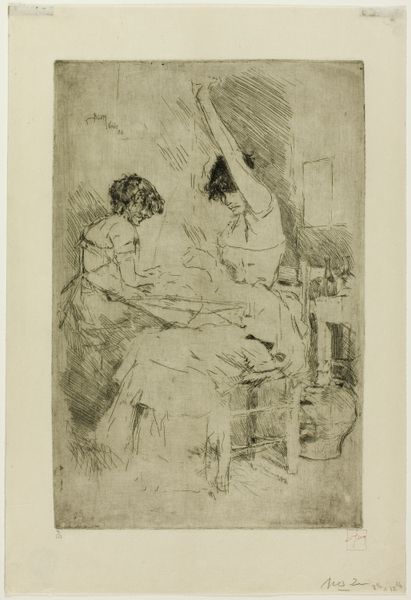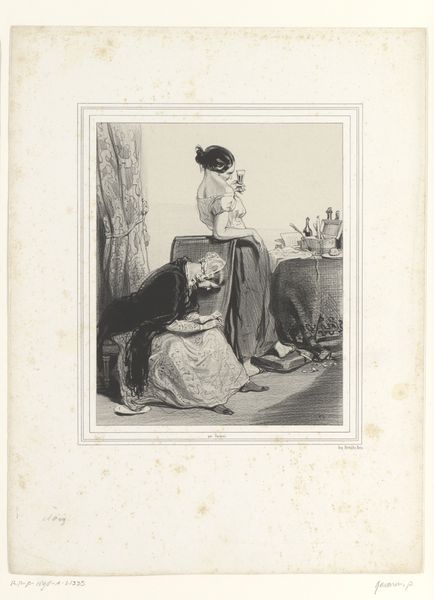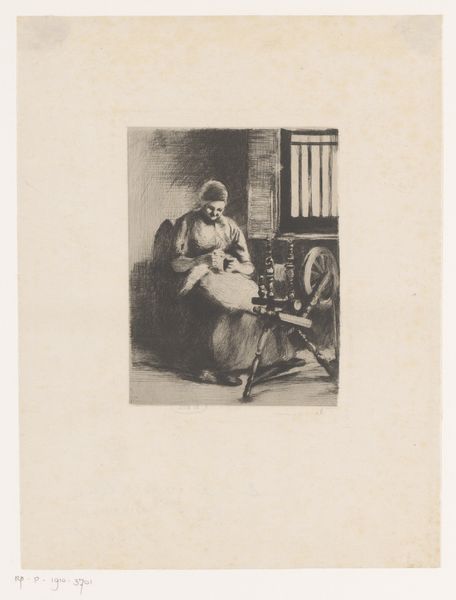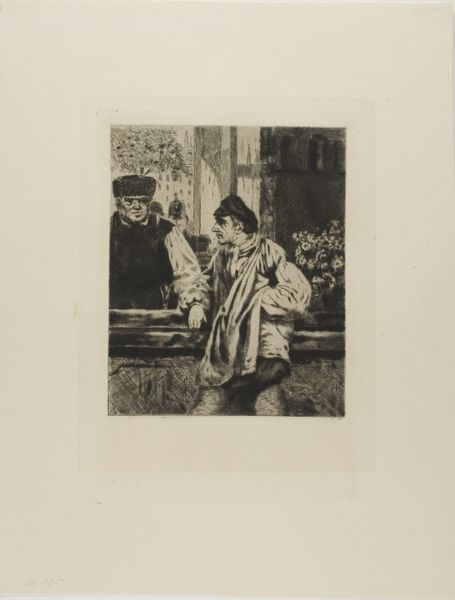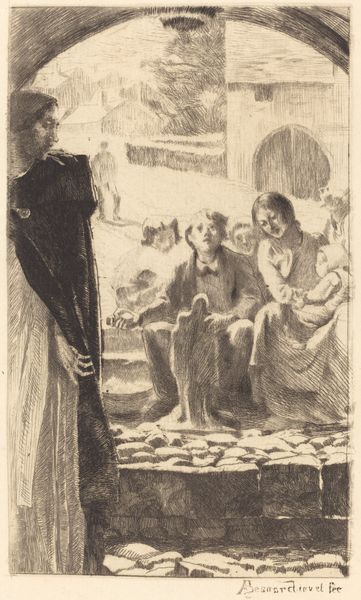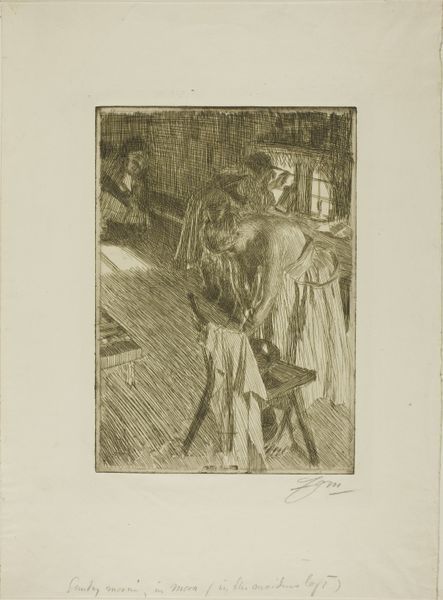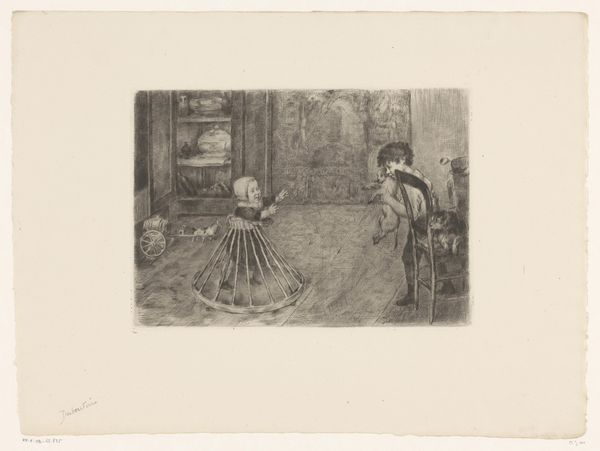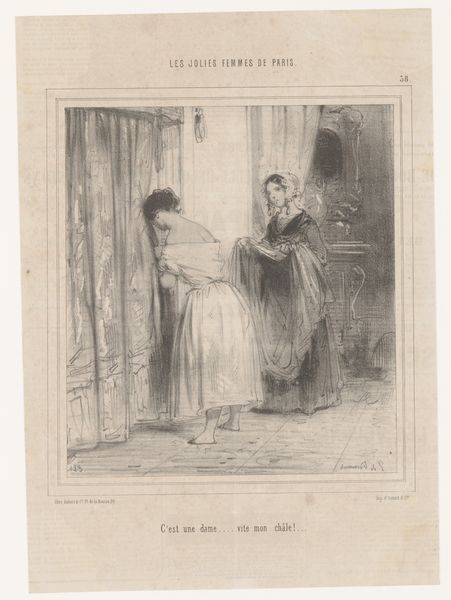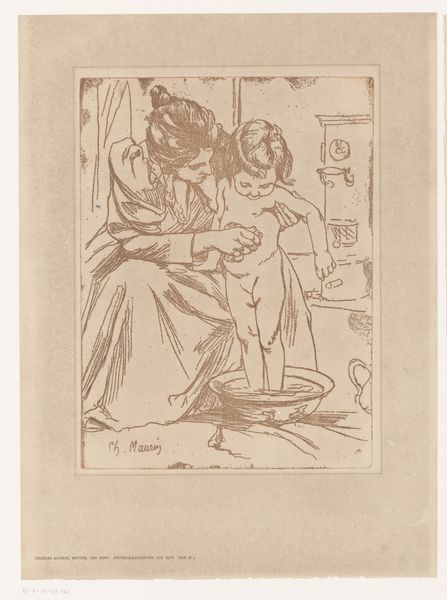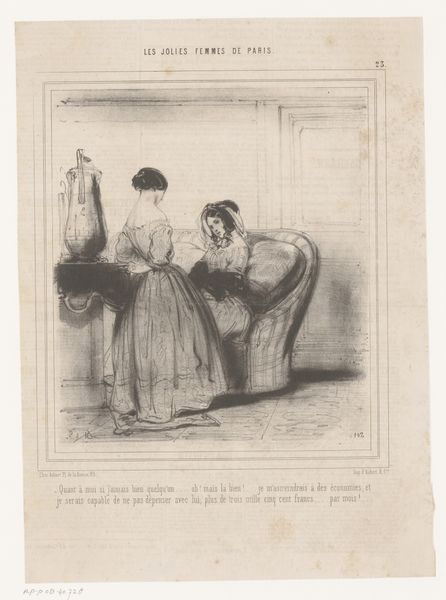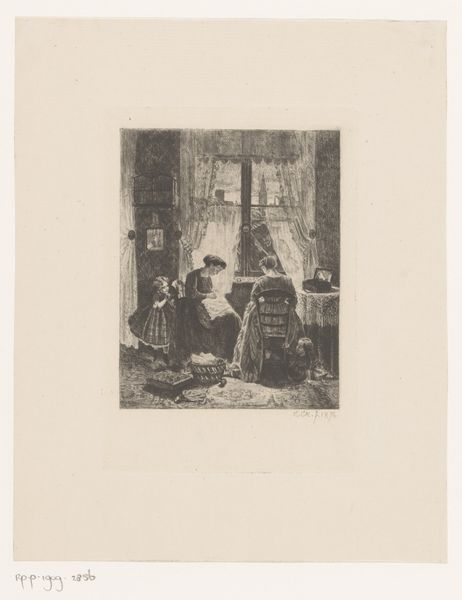
Mary Cassatt at the Louvre: The Etruscan Gallery 1879 - 1880
0:00
0:00
drawing, print, etching, paper, ink, pencil
#
portrait
#
drawing
# print
#
impressionism
#
french
#
etching
#
paper
#
ink
#
pencil drawing
#
pencil
#
france
#
genre-painting
Dimensions: 270 × 235 mm (image/plate); 359 × 270 mm (sheet)
Copyright: Public Domain
Curator: Looking at Mary Cassatt at the Louvre: The Etruscan Gallery, circa 1879-1880. What springs to mind when you first see this etching? Editor: A kind of hazy intimacy. There's a softness to the lines that invites you into their space, even though they're observed from a distance. The figures almost melt into the architecture of the gallery itself. Curator: Indeed. Note how Cassatt uses line and tone to create not just forms, but also the atmosphere of the Louvre. The composition leads our eye through a series of framed spaces. From the foregrounded women, past the framed view of the Etruscan artifacts, to a suggestion of another gallery in the distance. It's about the layering of gazes, a visual palimpsest. Editor: That’s interesting. It feels subtly subversive too, doesn't it? Depicting women, clearly of a certain class, engaging with art—participating in a space that, at the time, might have been seen as predominantly male. Is she suggesting that their presence changes the meaning of the museum itself? Curator: Precisely. It is a comment on women occupying cultural space, both as viewers and as subjects for art. Note the detail, or rather, deliberate lack of it in the rendering of the Etruscan artifacts. Our attention is steered back to the women. Editor: I like the slightly blurred quality too. It’s impressionistic in that way. The sketch-like rendering democratizes art, freeing itself of the classical formality of art history’s Grand Masters. How would this scene be read differently through a feminist lens? Curator: From a feminist standpoint, Cassatt's work dismantles conventional representations of women by highlighting their agency as active viewers within a historically patriarchal institution. Editor: So, by stepping into the museum, they reshape what it signifies, becoming part of its evolving narrative. Curator: A powerful commentary on spectatorship. The controlled freedom of Cassatt’s marks creates a rich, multi-layered artwork and prompts a vital exploration of female identity and social context. Editor: Absolutely. The seemingly casual observation is imbued with much deeper implications. I appreciate how this visit has prompted me to consider who populates these hallowed spaces.
Comments
No comments
Be the first to comment and join the conversation on the ultimate creative platform.

